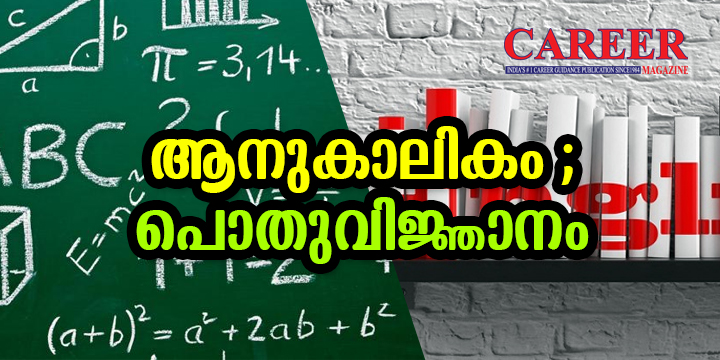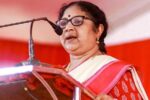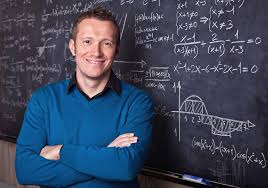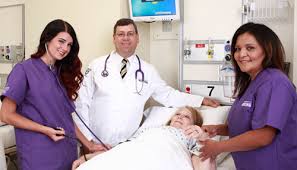PSC Exam : General Science
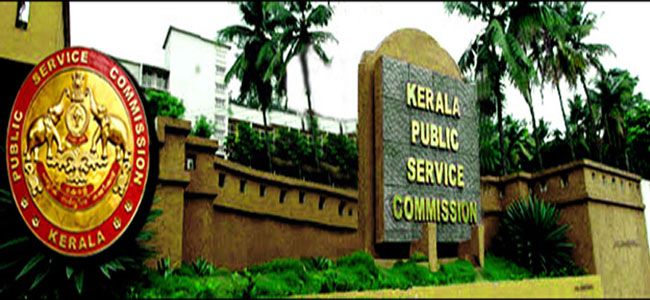
For all PSC Examinations , we suggest you to practice General Science , Current Affairs , Facts about India , Facts about Kerala & Renaissance of Kerala , Constitution of India and Civil Rights , General English ,Social Welfare Schemes & Measures ,Quantitative aptitude , Mental ability and test of reasoning, Information Technology and Cyber Laws. General Science is one of the most important divisions of Secretariat Asst. exam. Following Q&A will help you to understand the pattern of questions related to General Science. These are very relevant and appropriate questions for the upcoming PSC Exams. So attempt them and evaluate yourself. You can also do Mock Exam in this site for better result.
1. Chandrayan I is ……..
A. An earth observation satellite
B. Lunar Probe
C. Navigation satellite
D. Geo stationary satellite
Ans: B
2. Which of the following is not a member of the vitamin B complex?
A. Thiamine
B. Riboflavin
C. Folic acid
D. Ascorbic acid
Ans. D
3. RDX is a chemical compound. How is it used?
A. As an composition
B. As an reactor
C. As an explosive
D. As an nuclear weapon
Ans: C
4. Where the Bio-chemical compounds are used?
A. Skin Treatments
B. Food preservatives
C. Cooking Oils
D. All of the above
Ans: D
5. Leukemia is a disease that results from some kind of disorder in the blood. Precisely, leukemia occurs due to:
A. Hemoglobin increase in blood
B. Marked increase of white corpuscles in blood
C. Marked increase of protein and calcium
D. Marked reduction of proteins in blood
Ans: B
6. What is blood pressure?
A. It is the pressure that the blood clot exerts over the brain.
B. It is the pressure that blood receives on account of faulty commands from the brain.
C. It is the pressure that fatness or old age exerts on the body’s circulatory system.
D. It is the amount of pressure on the blood as a result of the heart’s pumping function and the resistance of the arterial walls.
Ans: D
7. Fungi are plants that lack:
A. Oxygen
B. Carbon dioxide
C. Chlorophyll
D. None of these
Ans. C
8. Which blood vessels have the smallest diameter?
A. Capillaries
B. Arterioles
C. Venules
D. Lymphatic
Ans. A
9. Which of the following is an air-borne disease?
A. Measles
B. Typhoid
C. Pink eye
D. None of the above
Ans. A
10. What is the full form of ASLV?
A. Augmented Satellite Launch Vehicle
B. Automatic Satellite Launch Vehicle
C. Aero Space Launch Vehicle
D. Area Satellite Launch Vehicle
Ans : A
11. Which organ of the body produces the fluid known as bile?
A. Liver
B. Pancreas
C. Gall bladder
D. Kidney
Ans. A
12. Which of the following hormones is a steroid?
A. Estrogen
B. Glucagon
C. Insulin
D. Oxytocin
Ans. A
13. Which one of the following is not a function of the liver?
A. Regulation of blood sugar
B. Enzyme activation
C. Detoxiation
D. Reproduction
Ans. D
14. Which part of human body skin has greatest number Sweat glands?
A. Forehead
B. Forearm
C. Palm of the hand
D. Back
Ans. C
15. Who among the following had started vaccination?
A. Jonas E. Salk
B. Paul Muller
C. Edward Jenner
D. Robert Frost
Ans. C
16. Proteins are consists of:
A. Sugars
B. Amino acids
C. Fatty acids
D. Nucleic acids
Ans. B
17. Liver, milk, egg yolk, fish liver oil are the sources of:
A. Vitamin A
B. Vitamin B2
C. Vitamin D
D. Vitamin C
Ans. C
18. Why the white blood corpuscles are popularly called “soldiers of the body”?
A. March at a regular pace
B. Appear uniform
C. Defend the body
D. Disciplined
Ans: C
19. Hepatitis is a general term for a disease that is caused by:
A. Viruses
B. Bacteria
C. Parasites
D. All the above
Ans: A
20. Which among the following is not an example of carbohydrate?
A. Maltose
B. Fructose
C. Glycogen
D. Glycerin
Ans: D
21. Which one of the following is not correctly matched?
A. Hemoglobin: Skin
B. Vitamin C: Scurvy
C. Carbohydrate: Potato
D. Fat: Butter
Ans: A
22. Which of the following name of scientist and their field of work is correctly matched?
A. DNA/Double helix: F. Crick J. Watson, M. Wilkins
B. Modern classification of plants and animals based on a system: Harvey
C. Bacteria: Linnaeus
D. Blood travels in a continuous circuit: Leeuwenhoek
Ans. A
23. Heart is made up of
A. Non-striated muscle
B. Cardiac muscle
C. Adipose tissue
D. Striated muscle
Ans. B
24. Hargobind Khorana’s work relates to:
A. Synthesis of simple DNA
B. Understanding the genetic code
C. Reduction of mutation
D. Synthesis of RNA from bacterial cell
Ans. B
25. Which of the following corona virus that kills human?
A. AIDS
B. FAIDS
C. SARS
D. HIV
Ans. C
26. Digestion of proteins starts in the:
A. Mouth
B. Stomach
C. Duodenum
D. Intestine
Ans. B
27. Which is India’s first experimental satellite launch vehicle?
A. ASLV
B. GSLV
C. SLV 3
D. None of these
Ans: C
28. Which vitamin is needed to prevent Xero-phthalmia?
A. A
B. B
C. C
D. D
Ans. A
29. Which is a communicable disease?
A. Asthma
B. Scurvy
C. Measles
D. Diabetes
Ans. C
30. Which one of the following is not correctly matched?
A. Tuberculosis: Lungs
B. Filaria: Lymph nodes
C. Encephalitis: Heart
D. Leukaemia: Blood cells
Ans. C
31. Which of the following has the highest protein content per gram?
A. Groundnut
B. Soyabean
C. Apple
D. Wheat
Ans. B
32. Which of the following have Alpha-keratin as protein?
A. Blood
B. Eggs
C. Skin
D. Wool
Ans. D
33. Mushrooms are/can be:
A. A variety of fungus
B. Fleshy, fruiting bodies of the fungus
C. Grown in small sheds or plots
D. All the above
Ans. D
34. What makes a reptile a reptile?
A. Cold blooded
B. Warm Blooded
C. Non-Hearing
D. Egg-laying
Ans. D
35. Which of the following is not a primary food product?
A. Vegetables
B. Milk
C. Cereals
D. Fruits
Ans. B
36. Which of the vegetables have abundance of Vitamins A and C?
A. Brinjal
B. Lady’s finger
C. Potato
D. Tomato
Ans. D
37. Which of the following defense of the human body against bacteria?
A. Haemoglobin
B. Phagocytes
C. Red blood cells
D. Blood platelets
Ans. B
38. Which of the following nerves connected from the eyes to ears?
A. Cerebrum
B. Cerebellum
C. Medulla
D. Spinal cord
Ans. B
39. Select the correct pair of disease and its causes:
A. Trichinosis – Bacterial infections
B. Sleeping sickness – Eating uncooked Pork
C. Athlete’s foot- Fungus
D. Meningitis – Protozoan (bite of tsetse fly)
Ans. C
40. Which of the following blood vessel that carries deoxygenated blood?
A. Aorta
B. Pulmonary artery
C. Hepatic artery
D. Pulmonary vein
Ans. B
41. Which of the following growth of human body affected by somatotrophic hormone?
A. Bones
B. Hair
C. Muscles
D. Connective tissue
Ans. A
42. Select the correct match of the disease and its affected part.
A. Caries – Epidermal tissue of the body
B. Ring worm – Brain and Spinal cord
C. Meningitis – Teeth
D. Pneumonia – Lungs
Ans. D
43. Hay fever is an allergic reaction to the presence of the following in the air:
A. Dust
B. Smoke
C. Pollen
D. Moisture
Ans. C
44. The behavioural pattern of which one of the following organisms may upset when DOT is used as pesticide?
A. Earthworm
B. Snake
C. Fish
D. Frog
Ans. C
45. When The Indian Space Research Organisation (ISRO) was set up?
A. 1962
B. 1969
C. 1972
D. 1952
Ans: B
46. Where is the Headquarter of ISRO?
A. Chandipur
B. Bengaluru
C. Mahendragiri
D. Chennai
Ans: B
47. Which of the following hormone controlled the blood pressure?
A. Vasopressin
B. Oxytocin
C. Estrogens
D. Testosterone
Ans. A
48. Brain and the spinal cord are invested by membranes called:
A. Arachnoids
B. Pleural membrane
C. Meninges
D. None of these
Ans. C
49. Which one of the following organisms has a role in converting nitrates to free nitrogen?
A. Pseudomonas
B. Nitrosomonas
C. Nitrobacter
D. Rhizobium
Ans. D
50. Which one of the following is the richest source of vitamin C?
A. Guava
B. Pineapple
C. Orange
D. Tomato
Ans : C
- Dr. K V Gopala Swamy
